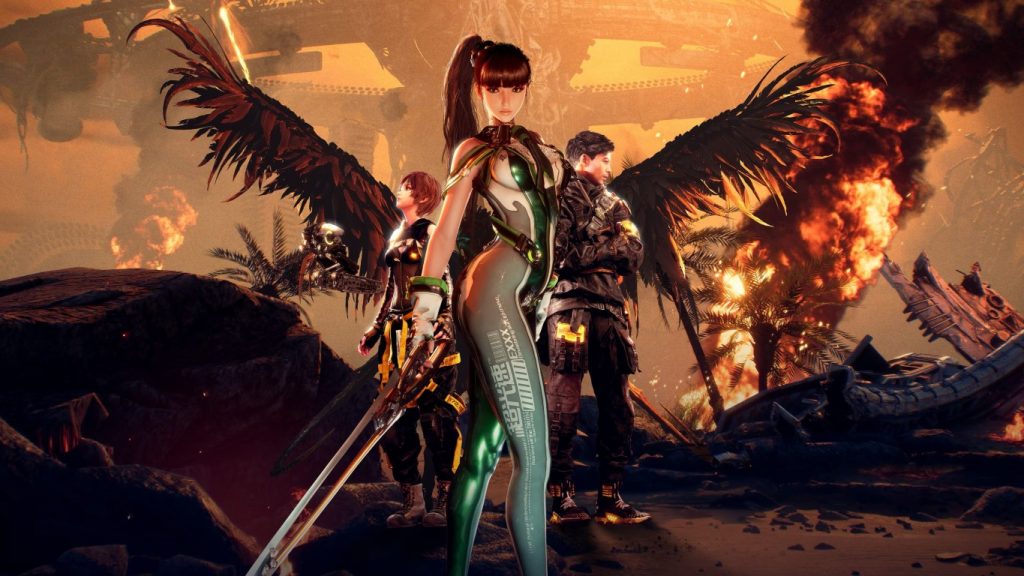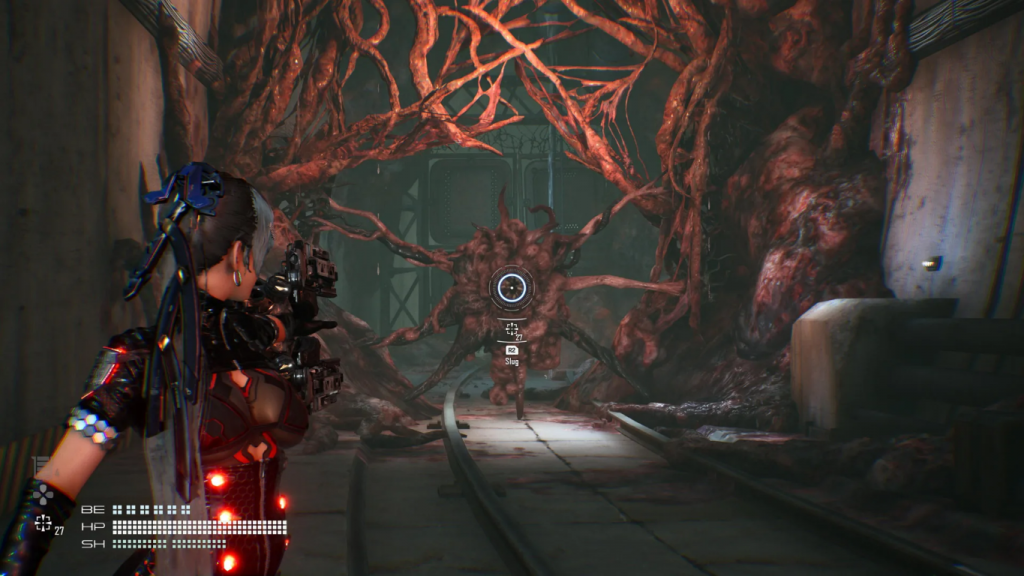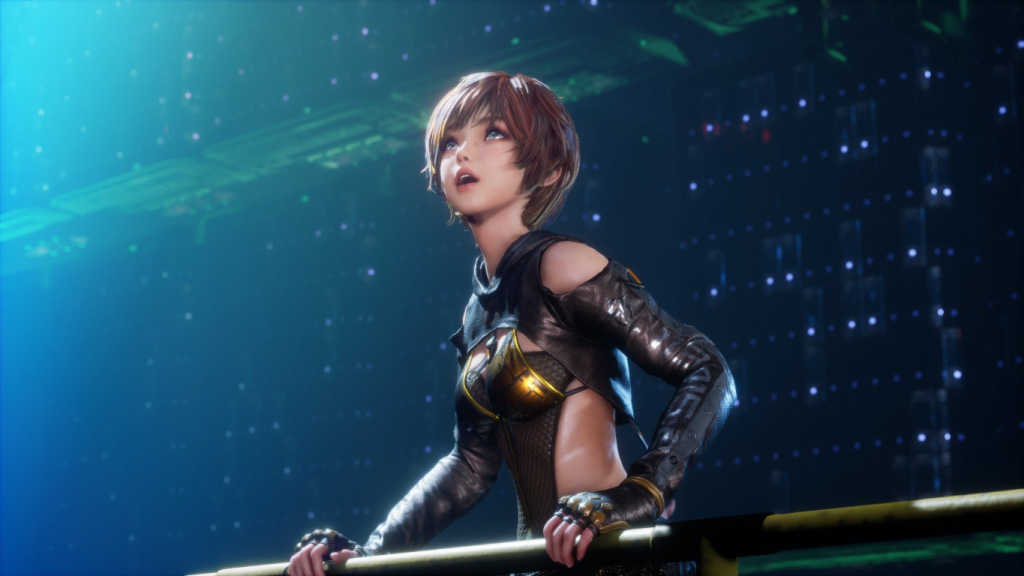The undeniably gorgeous looking Stellar Blade has been the subject of much controversy. While the game’s sexy protagonist and her wardrobe (and the decision by developer Shift Up to adjust it from pre-release demos to its launch version) has attracted bad faith discourse online about censorship, its one that proves to be ultimately irrelevant. Stellar Blade is an attractive looking game with slick visuals that keep up with its fast-paced combat, but is ultimately lacking in narrative and technical depth.
It’s the classic case of a game whose visual and technical appeal is only skin deep. While the combat finds a nice middle ground between the stylish trappings of a character action game and the focus and intensity of modern would be soulsborne games, it can’t save itself from moments of boredom and blandness. It’s a shame, because Stellar Blade is capable of some gripping rushes of adrenaline, but when the action slows down, the emptiness of its narrative is laid bare.
Stellar Blade follows Eve, a curvaceous soldier with superhuman potential tasked with cleansing an Earth ravaged by grotesque monsters known as the Naytiba. When most of her squadron is wiped out, she takes up her mission with only a mysterious Scavenger named Adam and a fellow soldier named Lily to help her out. There’s a bog standard amount of intrigue to this setup, but it doesn’t really develop into anything compelling, even in its final moments.

Themes like the weaponization of faith through religiosity and the nature of humanity periodically emerge, but any promise of having something to say is never really fulfilled. Instead the story is a barebones means of shuffling Eve from area to area as she fights a pantheon of minions and admittedly memorable boss. Fortunately, the game’s great visuals and excellent technical performance help carry that experience, but Stellar Blade falls behind its peers in everything else.
As stated, combat is where Stellar Blade is truly um, stellar. Basic light and heavy attacks make up the foundation of your offense, which you put together to string combos all while relying on block, dodge and parry for defense. Nothing new for character action games like say Devil May Cry or Bayonetta, but Stellar Blade nails them, and the fluidity of the game’s technical performance allows for ease of experimentation while opening up a high level of mastery.

Taking on multiple foes is initially challenging, but over time you unlock a broader range of skills that can increase your area of effect and your potential for crowd control. Deflecting and dodging isn’t just crucial to outlasting the Naytiba, it’s how you open up the opportunity to use more powerful moves. And like any good action game, your triumphs depend largely on understanding the movements of your enemy, not button mashing.

Unfortunately, pacing issues hurt Stellar Blade’s single-player experience. There’s enough value for money if you’re one of those players who counts the hours to dollars, but at the expense of rhythm and elegance. You’ll be having an exhilarating time tearing through dozens of enemies in what feels like grand old set piece to take out one objective, until you realize there are eight more. Multiple combat encounters are separated by detours to find switches and keys.
Rather than make lean, efficient cuts to serve its momentum, developer Shift Up has chosen to make a game that is “the most game” possible. The developer has chosen to pad the game with puzzles and key hunts between dangerous combat encounters because it thinks it should without asking how to eliminate tedium and worse, frustration, which rears its ugly head whenever you have to repeat lengthy sequences due to a fatal combat encounter.
When the only obstacle to your progression is repeating sequences with little room for exploration, Stellar Blade begins to feel like it could have used a bit more surgical precision in the design of its campaign. Its hurt even more by the aforementioned weak narrative, because it can’t support all this design fat. At about 20 hours or more, it feels like a half-remembered dream.

The various twists and turns of the story, require characters to change their motivations suddenly. And then, they quickly return to how you understood them with nary a comment. That the voice acting is so stiff and dry only exacerbates this. Though Rosie Jones is a notable exception, delivering a standout vocal performance. As Eve’s support engineer Lily, Jones rises to the challenge of navigating a complex array of moods and tones that her character and the story demands.
Ultimately, the game has the same problem as the insufferable discourse around it. It’s all just a veneer over more critical concerns. Just as discussion of Stellar Blade’s promise and potential were dismissed by a fixation on culture war, the weaknesses of its storytelling and campaign are barely concealed by its slick visuals and solid combat technicals. It’s a reminder that a game like Stellar Blade needs more than skin deep beauty to truly excel.


